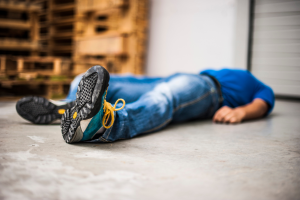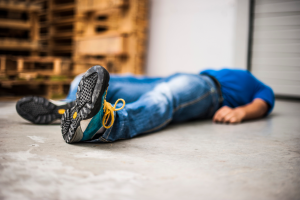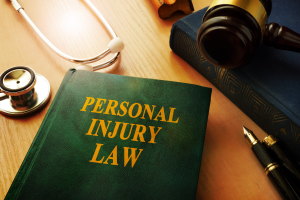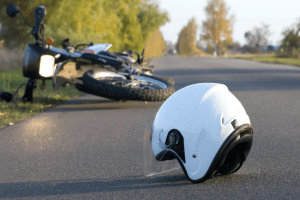This guide will explain when you may be eligible to make a personal injury claim for an accident at work caused by a change in duties. It is important to establish employer negligence when pursuing compensation after a workplace accident. Employer negligence occurs when your employer breaches the duty of care that they owed to you at the time of your accident, resulting in you sustaining injuries. We will explain the eligibility requirements your personal injury claim must meet throughout this guide.

Accident at work caused by a change in duties claims guide
Furthermore, this guide will provide useful examples of how a change in duties could lead to an accident at work and when this may be caused by your employer breaching their duty of care.
To make a personal injury claim, it is important to prove negligence. We will offer some examples of evidence you could obtain to support your claim.
If you would like legal advice on whether you could have a legitimate claim, contact us today. Our advisors are available 7 days a week, 24 hours a day. Should they find you could be eligible to seek personal injury compensation, one of our advisors could connect you with one of our No Win No Fee solicitors, who may have experience dealing with claims similar to your own.
To speak to an advisor, you can:
- Contact us on our website
- Call us on 0800 073 8804
- Message us using our live chat feature below
Select A Section
- Who Could Claim For An Accident At Work Caused By A Change In Duties?
- How Could An Accident At Work Caused By A Change In Duties Occur?
- How To Prove That An Accident At Work Was Caused By A Change In Duties
- What Could You Claim For An Accident In The Workplace?
- Why Contact A No Win No Fee Workplace Accident Claim Solicitor?
- Find Out More About Claiming For Work-Related Accidents
Who Could Claim For An Accident At Work Caused By A Change In Duties?
To claim personal injury compensation for an accident at work caused by a change in duties, you must meet the eligibility criteria. This is as follows:
- Firstly, your employer owed to you a duty of care at the time and place of the accident.
- Secondly, they breached this duty.
- Thirdly, this breach caused you to suffer from injuries. These injuries could be physical or they may be psychological. In some cases, both may occur.
This is the definition of employer negligence. An employer’s duty of care is outlined in Section 2 of the Health and Safety at Work etc. Act 1974. It means that an employer must take reasonably practical steps to ensure the safety of their employees at work. This includes measures such as providing proper employee training and ensuring maintenance is carried out within a reasonable time frame.
Therefore, being injured in an accident at work will not automatically entitle you to make a claim. Your injuries must have been caused by your employer breaching a duty of care owed to you.
Also, when considering whether you could make a personal injury claim you must ensure that you are within the relevant limitation period, as discussed below.
Limitation Periods On Claiming For An Accident At Work Caused By A Change In Duties
Following an accident, you may wonder, ‘how long after an injury at work can I claim compensation?‘. In general, the time limit to start a personal injury claim is three years from the date of the accident, this is outlined in the Limitation Act 1980. However, there can be exceptions to these limits. Therefore, you may still be able to claim in certain cases if more than three years has passed since the accident in which you were injured.
If you would like to learn more about these exceptions in connection to your claim, please speak to one of our advisors. They can provide insight into whether you have a legitimate claim.
How Could An Accident At Work Caused By A Change In Duties Occur?
During your employment, you may experience changes in your duties. Below we will provide examples of when these changes could lead to an accident at work:
- Your employer fails to provide adequate training on how to safely perform your new duties.
- To carry out your work duties, you are instructed to use a piece of dangerous machinery that is defective as it has not been properly maintained. Your employer must take reasonably practicable steps to ensure that work equipment is safe for its intended use under The Provision and Use of Work Equipment Regulations 1998 (PUWER).
- Your employer fails to provide you with personal protective equipment (PPE) when your new duties expose you to risks in the workplace.
If you have been involved in an accident at work caused by a change in duties that occurred due to employer negligence, please speak to a member of our team.
How To Prove That An Accident At Work Was Caused By A Change In Duties
To support your personal injury claim, it is important that you gather evidence. This evidence can be used to prove employer negligence as well as show how badly you were affected by your injuries.
Below we have provided some examples of potential evidence you could collect for your case:
- CCTV footage – Learn how to request CCTV footage of yourself.
- A self-kept diary – Detailing your treatment and symptoms.
- Copies of your medical records – Learn how to get your medical records.
- Photographs – Take photographic evidence of the accident site and any visible injuries.
- Witness contact details – Note down the contact details of any potential witnesses who could give an account to support your claim at a later date.
- Accident at work book – Fill out the accident at work book, as this report could be used as evidence.
If you have sustained a workplace injury, and have evidence of employer negligence, contact our team of advisors for legal advice on how to claim personal injury compensation.
What Could You Claim For An Accident In The Workplace?
There are two potential types of damages that you could receive in a successful claim made after suffering an accident at work caused by a change in duties. Firstly, general damages cover the psychological harm and/or physical pain and suffering caused by your injuries.
Below, we have provided a guideline compensation table using brackets from the Judicial College Guidelines (JCG) for various potential workplace injuries. Solicitors can also refer to this document when valuing personal injury claims. Also, if you would like a settlement estimate tailored to your case, you could use our compensation calculator.
Guideline Compensation Table
| Injury | Severity | Value | Notes |
|---|---|---|---|
| Back injuries | (a)(i) Severe | £91,090 to £160,980 | Cases involving spinal cord damage and damage to nerve roots, resulting in a combination of very serious consequences such as, severe pain, and impaired bladder function. |
| Back injuries | (b)(ii) Moderate | £12,510 to £27,760 | Injuries such as, disturbance of ligaments and muscles leading to back pain. |
| Injuries to the hips and pelvis | (a)(i) Severe | £78,400 to £130,930 | Extensive pelvis fractures involving, for example, a ruptured bladder and the dislocation of a low back joint. |
| Leg injuries | (b)(ii) Severe | £54,830 to £87,890 | Injuries causing permanent problems with mobility, leading to the need for mobility aids. |
| Hand Injuries | (e) Serious | £29,000 to £61,910 | The hand will have been reduced to about 50% capacity, for example. |
| Ankle injuries | (b) Severe | £31,310 to £50,060 | Injuries that require an extensive period of treatment. |
| Arm injuries | (c) Less severe | £19,200 to £39,170 | Significant disabilities from which the person has made or will make a substantial amount of recovery. |
| Elbow injuries | (b) Less severe | £15,650 to £32,010 | Impaired function but not requiring of major surgery or leading to significant disability. |
| Shoulder injuries | (e) Fracture of the Clavicle | £5,150 to £12,240 | The award is dependant upon the extent of the fracture, residual symptoms, level of disability and further factors. |
| Wrist injuries | (d) Recovery longer than 12 months | £6,080 to £10,350 | Cases where a complete or largely complete recovery from a fracture or soft tissue injury takes longer than 12 months. |
Please note, these figures are not guaranteed; they are a guide.
Further Compensation You May Claim
You may also be eligible to claim special damages, which account for the financial losses resulting from your workplace injuries. Some examples of these losses include:
- Travel costs
- Adaptations to your home
- Loss of earnings
- Care costs
Accordingly, you should provide evidence of these losses, such as receipts, invoices and payslips. To discuss the compensation that you may have valid grounds to receive, please speak to a member of our team.
Why Contact A No Win No Fee Workplace Accident Claim Solicitor?
Using a No Win No Fee solicitor under a Conditional Fee Agreement (CFA) can mean that there will be no upfront or ongoing costs to pay for the services your solicitor provides. What’s more, you will usually have no payments to make for their services if your claim is unsuccessful.
In the event of a successful claim, your solicitor can receive a small success fee taken from the compensation. This fee will be a legally capped percentage under the Conditional Fee Agreements Order 2013, which means that you can’t be overcharged.
Speak to one of our advisors to find out whether your claim may be eligible; if they find that it may be, they could put you in touch with one of our No Win No Fee solicitors.
Speak To Our Team
Contact our team for free today to discuss your potential accident at work claim.
To speak to an advisor, you can:
-
- Contact us on our website
- Call us on 0800 073 8804
- Message us using our live chat feature below
Find Out More About Claiming For Work-Related Accidents
Take a look at more of our guides:
Learn more about claiming for accidents at work where no safety measures were in place.
Find out when you could claim after being dismissed after an accident at work.
More information on claiming after an apprentice accident at work.
Explore these external links for further information and guidance:
NHS – First Aid
GOV.UK – Statutory Sick Pay (SSP)
The Health and Safety Executive (HSE) – Employer’s responsibilities
If you have any questions about who could pursue personal injury compensation after an accident at work caused by a change in duties, speak with our team today.
Written by Oxton
Edited by Stocks












